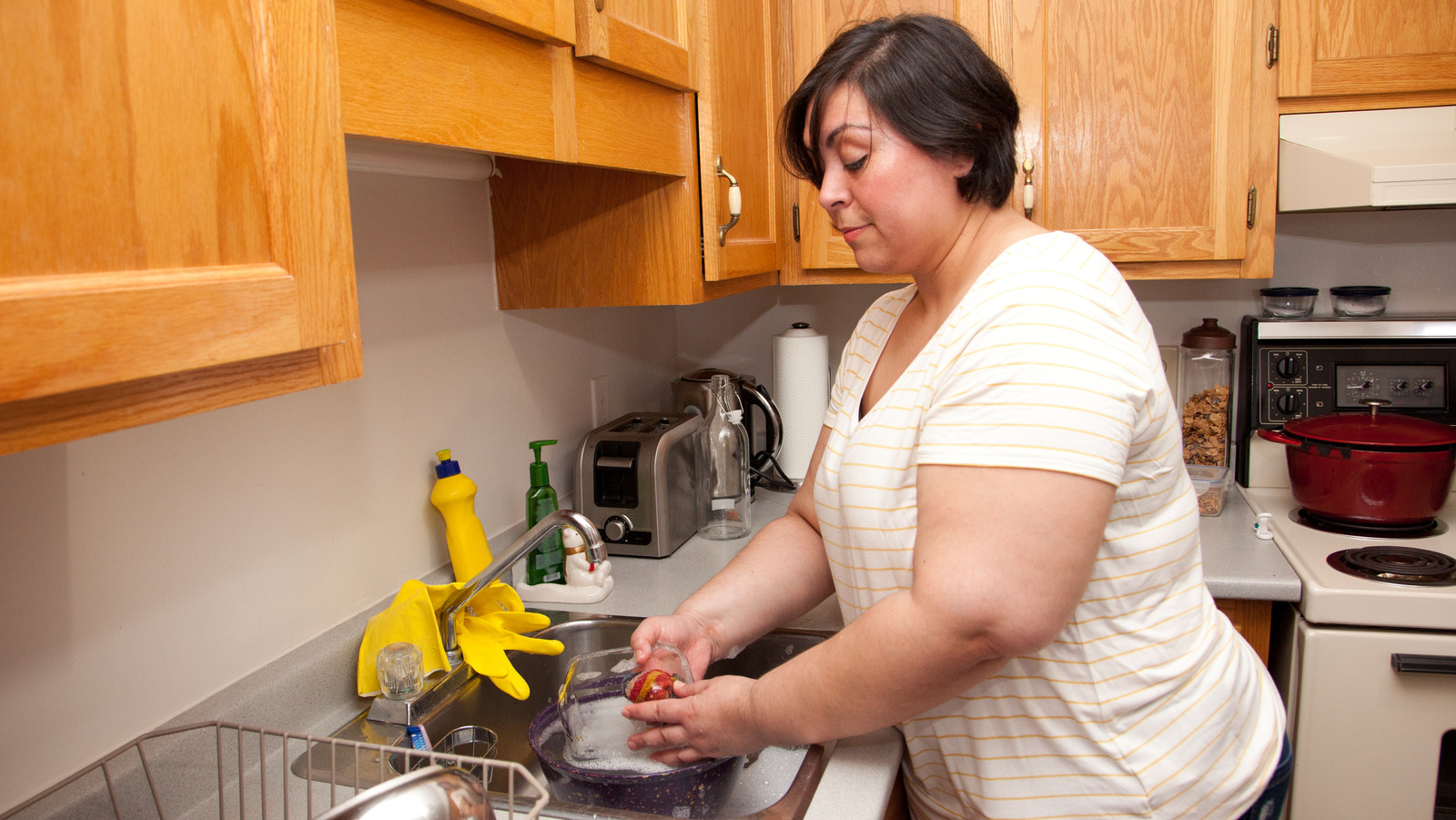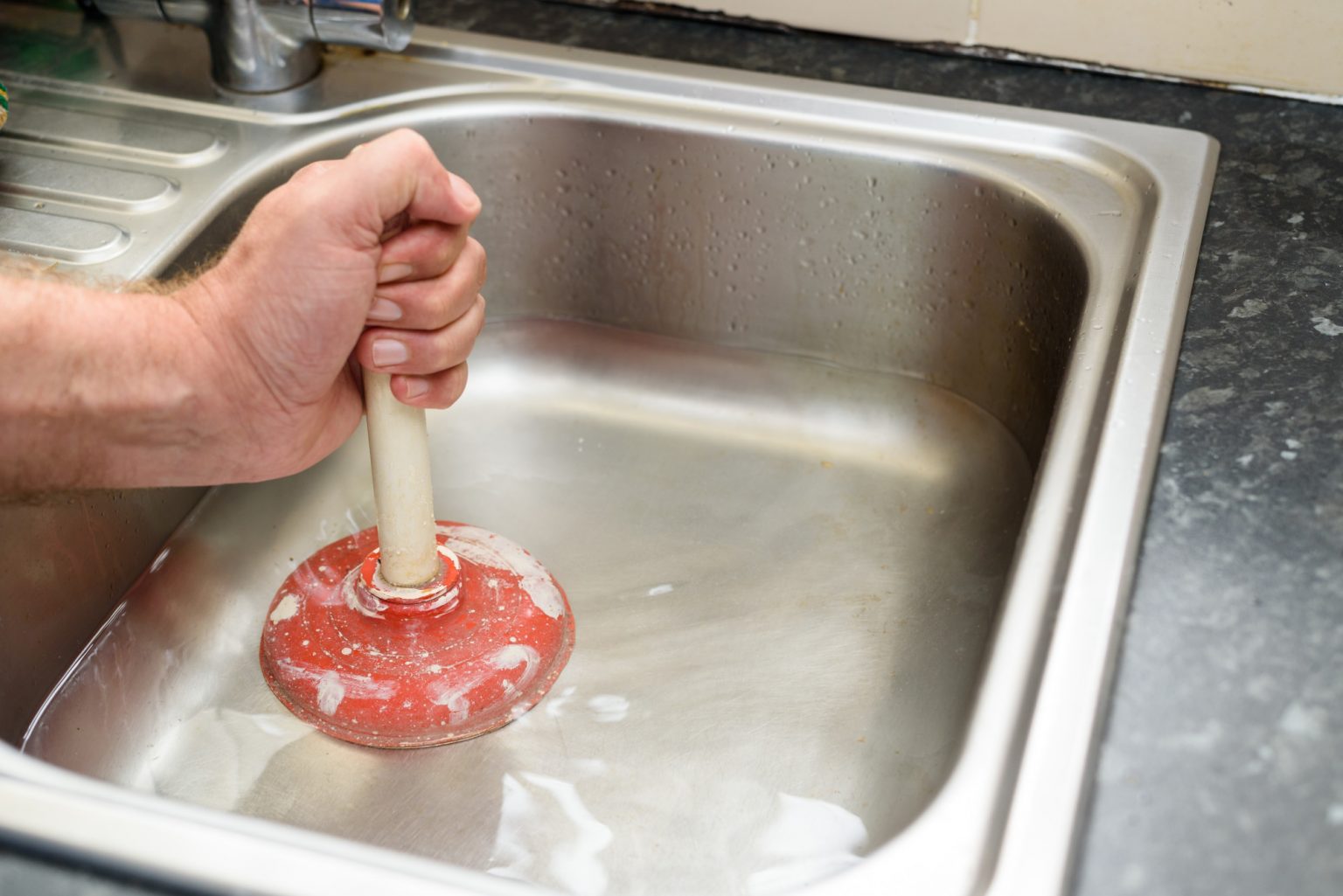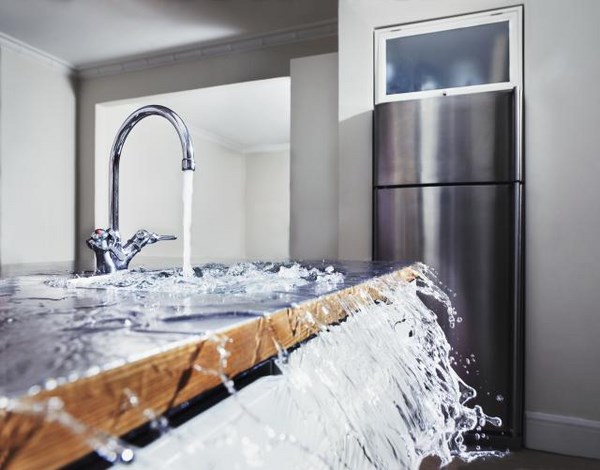Dealing with a clogged kitchen sink can be frustrating, especially when it disrupts your daily routine and causes unpleasant odors. However, with the right steps and tools, you can easily unclog your kitchen sink and get back to your normal life. Here are 10 steps to follow to unclog your kitchen sink and prevent it from happening again in the future.Unclogging a Kitchen Sink: 10 Steps to Follow
Before you start unclogging your kitchen sink, make sure to gather all the necessary tools such as a plunger, a plumber's snake, and some baking soda and vinegar. Once you have everything you need, follow these steps to fix a clogged kitchen sink: Step 1: Remove any standing water in the sink using a cup or a bowl. This will make it easier to work on the clog. Step 2: If you have a double sink, make sure to cover the drain on the other side with a wet cloth or a stopper. This will create enough pressure to help unclog the sink. Step 3: Use a plunger to create suction and dislodge the clog. Place the plunger over the drain and push it up and down several times. Make sure to cover the entire drain with the plunger to create a strong suction. Step 4: If the plunger doesn't work, try using a plumber's snake. Insert the snake into the drain and rotate it while pushing it in and out. This will help break up the clog and push it through the pipes. Step 5: If the clog is still not clearing, try using a mixture of baking soda and vinegar. Pour 1/2 cup of baking soda into the drain, followed by 1/2 cup of vinegar. Let it sit for 30 minutes and then pour hot water down the drain to flush out the clog. Step 6: For stubborn clogs, you can try using a commercial drain cleaner. Make sure to follow the instructions on the label carefully and use gloves and eye protection when handling the chemicals. Step 7: If none of the above methods work, you may have a more severe clog that requires professional help. Contact a licensed plumber to help you clear the clog. Step 8: Once the clog is cleared, make sure to run hot water down the drain for a few minutes to flush out any remaining debris. Step 9: Clean the stopper and the strainer to remove any buildup that may cause future clogs. Step 10: To prevent future clogs, make sure to run hot water down the drain after each use and avoid pouring grease, oils, and food scraps down the drain.How to Fix a Clogged Kitchen Sink
Understanding the causes of a clogged kitchen sink can help you prevent it from happening again in the future. Here are five common causes of a clogged kitchen sink: 1. Food scraps: The most common cause of a clogged kitchen sink is food scraps that get stuck in the drain. Make sure to use a sink strainer to catch any food particles before they go down the drain. 2. Grease and oils: Pouring grease and oils down the drain can cause them to solidify and clog the pipes. Dispose of grease and oils in a separate container instead of pouring them down the drain. 3. Soap residue: Soap residue can build up in the pipes and cause clogs. Use a natural or low-sudsing soap to prevent this from happening. 4. Foreign objects: Small objects like utensils or jewelry can accidentally fall into the sink and get stuck in the pipes, causing a clog. 5. Old pipes: Over time, pipes can deteriorate and develop cracks and leaks, allowing debris to build up and cause clogs.5 Common Causes of a Clogged Kitchen Sink
If your kitchen sink is badly clogged and none of the above methods seem to work, here are some DIY solutions you can try: 1. Hot water and dish soap: Pour a pot of boiling water down the drain, followed by a quarter cup of dish soap. Let it sit for 15 minutes and then pour more hot water down the drain to flush out the clog. 2. Salt and baking soda: Mix equal parts of salt and baking soda and pour it down the drain. Let it sit for 15 minutes and then pour hot water down the drain to break up the clog. 3. Wet/dry vacuum: If you have a wet/dry vacuum, you can use it to suck out the clog from the drain. Make sure to cover the vent to prevent the clog from getting into the vacuum.DIY Solutions for a Badly Clogged Kitchen Sink
If you prefer to use commercial products to unclog your kitchen sink, here are some of the best products on the market: 1. Drano Max Gel Clog Remover: This gel formula is designed to dissolve tough clogs and works on both standing water and slow-running drains. 2. Green Gobbler Drain Clog Dissolver: This eco-friendly formula uses natural enzymes to break down clogs and is safe for all types of pipes. 3. Liquid-Plumr Clog Destroyer Plus Pipeguard: This powerful formula can dissolve even the toughest clogs and has added pipe protection to prevent future clogs.The Best Products for Unclogging a Kitchen Sink
The best way to deal with a clogged kitchen sink is to prevent it from happening in the first place. Here are some tips to prevent clogs in your kitchen sink: 1. Use a sink strainer: A sink strainer can catch food scraps and prevent them from going down the drain and causing clogs. 2. Dispose of grease and oils properly: Instead of pouring them down the drain, dispose of grease and oils in a separate container and throw it in the trash. 3. Run hot water down the drain: After each use, run hot water down the drain for a few minutes to flush out any leftover debris. 4. Avoid putting foreign objects in the sink: Make sure to keep utensils, jewelry, and other small objects away from the sink to prevent them from falling in and causing clogs. 5. Regularly clean the sink strainer and stopper: Make sure to clean the sink strainer and stopper regularly to prevent buildup that can cause clogs.How to Prevent a Clogged Kitchen Sink
If you've tried all the DIY methods and products and your kitchen sink is still badly clogged, it may be time to call in a professional plumber. A licensed plumber has the necessary tools and expertise to unclog your kitchen sink and prevent future clogs.Professional Plumbing Services for a Bad Clogged Kitchen Sink
If you prefer to use natural remedies to unclog your kitchen sink, here are some effective options: 1. Baking soda and vinegar: This powerful combination can break up clogs and is safe for all types of pipes. 2. Salt, baking soda, and vinegar: The addition of salt in this mixture can help remove stubborn clogs. 3. Boiling water and dish soap: This simple yet effective solution can help break up clogs and prevent future ones.Natural Remedies for a Clogged Kitchen Sink
If your kitchen sink is severely clogged, you may notice the following signs: 1. Slow draining: If your sink is draining slowly, it could be a sign of a clog in the pipes. 2. Standing water: If water is not draining at all, it means your sink is heavily clogged and needs immediate attention. 3. Unpleasant odors: A clogged kitchen sink can lead to foul odors, especially if food scraps and other debris start decomposing in the pipes. 4. Gurgling sounds: If you hear gurgling sounds coming from your sink, it could be a sign of a clog in the pipes. If you notice any of these signs, make sure to take immediate action to prevent the clog from getting worse.Signs of a Severely Clogged Kitchen Sink
If you prefer to use a natural remedy to unclog your kitchen sink, here's how you can do it using baking soda and vinegar: Step 1: Remove any standing water from the sink using a cup or a bowl. Step 2: Pour 1/2 cup of baking soda down the drain. Step 3: Follow it with 1/2 cup of vinegar. Step 4: Let it sit for 30 minutes. Step 5: Pour hot water down the drain to flush out the clog. Step 6: If the clog is still not cleared, repeat the process or try using a plunger or a plumber's snake. Dealing with a badly clogged kitchen sink can be a hassle, but by following these steps and tips, you can easily unclog your sink and prevent future clogs. If the clog is severe, make sure to contact a professional plumber for help. With the right tools and techniques, you can keep your kitchen sink running smoothly and avoid any disruptions in your daily routine.How to Clear a Clogged Kitchen Sink with Baking Soda and Vinegar
The Importance of Proper Drainage in Kitchen Design

Why a Clogged Kitchen Sink is a Design Nightmare
 When it comes to designing a functional and efficient kitchen, proper drainage should be a top priority. A clogged
kitchen sink
not only causes inconvenience and frustration, but it can also lead to costly repairs and potential health hazards. Not to mention, a clogged sink is a major eyesore and can disrupt the entire aesthetic of your kitchen. In this article, we will discuss the importance of proper drainage in kitchen design and why a clogged sink is a design nightmare.
When it comes to designing a functional and efficient kitchen, proper drainage should be a top priority. A clogged
kitchen sink
not only causes inconvenience and frustration, but it can also lead to costly repairs and potential health hazards. Not to mention, a clogged sink is a major eyesore and can disrupt the entire aesthetic of your kitchen. In this article, we will discuss the importance of proper drainage in kitchen design and why a clogged sink is a design nightmare.
The Role of Drainage in Kitchen Design
 Proper drainage is an essential aspect of kitchen design that is often overlooked.
Drainage
refers to the system that removes water and waste from your kitchen sink. It involves the use of pipes, traps, and vents to ensure that water flows freely and efficiently out of your kitchen. A well-designed drainage system will prevent clogs, leaks, and foul odors, making your kitchen a more pleasant and hygienic space to work in.
Proper drainage is an essential aspect of kitchen design that is often overlooked.
Drainage
refers to the system that removes water and waste from your kitchen sink. It involves the use of pipes, traps, and vents to ensure that water flows freely and efficiently out of your kitchen. A well-designed drainage system will prevent clogs, leaks, and foul odors, making your kitchen a more pleasant and hygienic space to work in.
The Consequences of a Clogged Kitchen Sink
 A clogged kitchen sink can have a ripple effect on your entire kitchen design. For starters, it can disrupt the flow of your daily tasks, making it difficult to prepare meals and clean up afterwards. It can also cause water to back up and overflow onto your countertops, potentially damaging your kitchen cabinets and flooring. Additionally, a clogged sink can lead to unpleasant odors and even attract pests, which can be a major health hazard for you and your family.
A clogged kitchen sink can have a ripple effect on your entire kitchen design. For starters, it can disrupt the flow of your daily tasks, making it difficult to prepare meals and clean up afterwards. It can also cause water to back up and overflow onto your countertops, potentially damaging your kitchen cabinets and flooring. Additionally, a clogged sink can lead to unpleasant odors and even attract pests, which can be a major health hazard for you and your family.
The Design Nightmare of a Clogged Sink
 Not only does a clogged
kitchen sink
create practical problems, but it can also ruin the overall design of your kitchen. A sink full of dirty dishes and stagnant water is far from visually appealing and can make your entire kitchen look unkempt and unsanitary. Furthermore, a clogged sink can be a result of poor design choices, such as using the wrong size or type of pipes or neglecting to install a proper garbage disposal. This can reflect poorly on the overall quality and functionality of your kitchen design.
In conclusion, proper drainage is a crucial element in kitchen design that should not be overlooked. A clogged kitchen sink can cause a multitude of problems, from practical inconveniences to aesthetic nightmares. If you are experiencing frequent clogs, it may be time to reassess your drainage system and make the necessary changes to prevent future issues. Remember, a well-designed kitchen is not only beautiful, but also functional and efficient.
Not only does a clogged
kitchen sink
create practical problems, but it can also ruin the overall design of your kitchen. A sink full of dirty dishes and stagnant water is far from visually appealing and can make your entire kitchen look unkempt and unsanitary. Furthermore, a clogged sink can be a result of poor design choices, such as using the wrong size or type of pipes or neglecting to install a proper garbage disposal. This can reflect poorly on the overall quality and functionality of your kitchen design.
In conclusion, proper drainage is a crucial element in kitchen design that should not be overlooked. A clogged kitchen sink can cause a multitude of problems, from practical inconveniences to aesthetic nightmares. If you are experiencing frequent clogs, it may be time to reassess your drainage system and make the necessary changes to prevent future issues. Remember, a well-designed kitchen is not only beautiful, but also functional and efficient.






























































































:max_bytes(150000):strip_icc()/freshen-and-unclog-drain-with-baking-soda-1900466-22-bbf940b70afa4d5abef0c54da23b1d3f.jpg)


:max_bytes(150000):strip_icc()/freshen-and-unclog-drain-with-baking-soda-1900466-18-1a5b5da01939471ca8f8823865bd1ce8.jpg)







